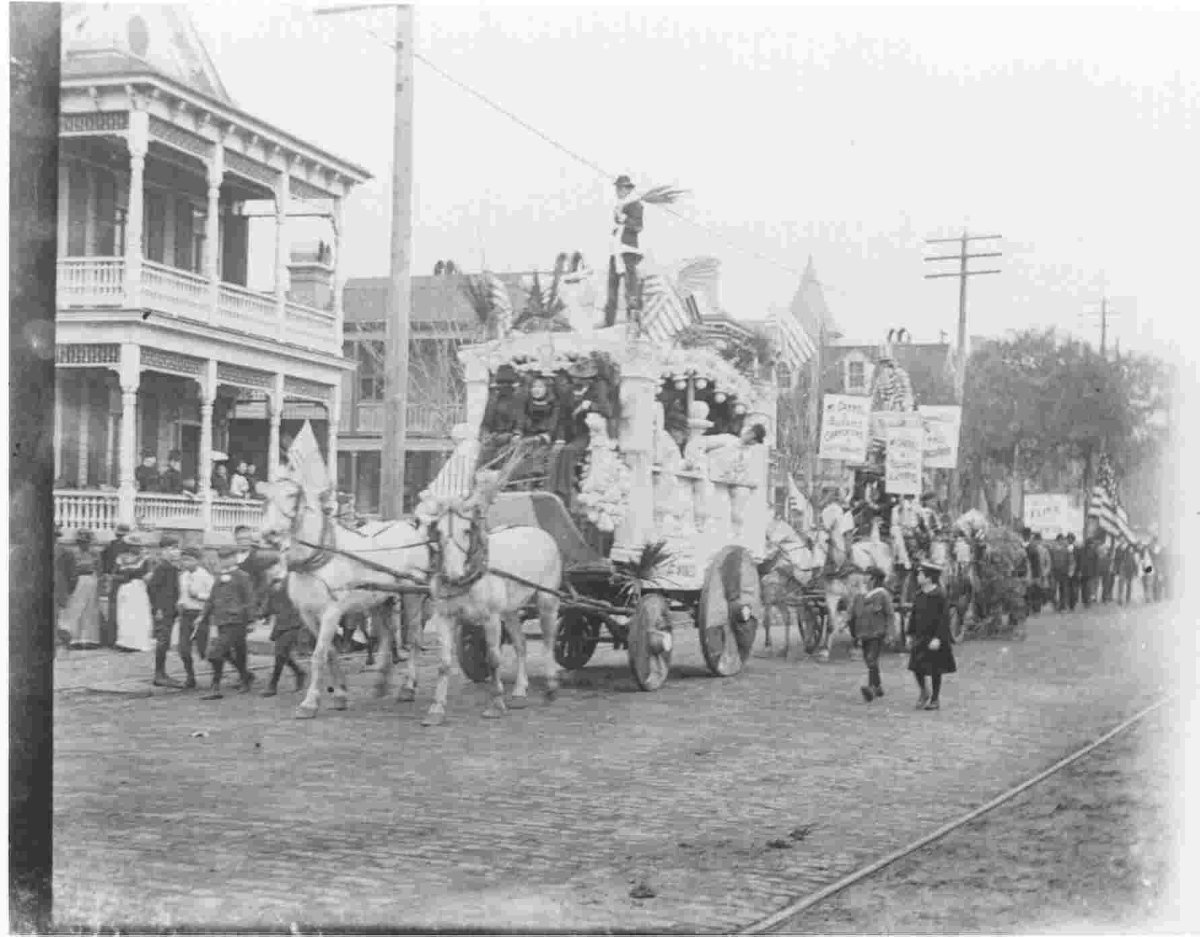 Menu
Menu

Photo is identified as the "Float Parade," opening day of the SC and West Indian Exposition, 1901-02. Horse-drawn floats move down the street.
Held in Charleston from December 1, 1901, to June 20, 1902, the SC Inter-State and West Indian Exposition followed world’s fairs in other southern cities. While many of the city’s traditional merchants and bankers were uninterested, the idea gained support from the city’s progressive young businessmen. Under the leadership of Frederick C. Wagener, Charleston’s Exposition Company raised money through private and corporate subscriptions to stock, a municipal bond issue, state government, and donations of convict labor. The company acquired the lands of the old Washington Race Course and the adjacent Lowndes farm, lying north of the city along the Ashley River. The company hired Bradford Lee Gilbert, a New York-based architect and the supervising architect of Atlanta’s Cotton States Exposition (1895), to oversee the design and construction of the landscape and buildings.
The goal of the Exposition was to stimulate trade through the city’s harbor, where traffic had steadily decreased since the Civil War. In the wake of the Spanish-American War, the Exposition’s proponents sought to position Charleston as the principal port of exchange between the United States and the Caribbean and Latin America. However, the federal government did not give the Exposition its formal approval until just before the start, and no foreign governments sent official exhibits. Poor weather, a late installation of many exhibits, and a chronic shortage of funds, all contributed to the poor financial results of the Exposition.
After the end of the Exposition, the city of Charleston acquired the eastern portion of the grounds containing the formal court and main buildings for use as Hampton Park. In the 1910s, the state acquired the western portion of the grounds along the Ashley River for the new campus of the Citadel. (Source: SCEncylopedia.com)